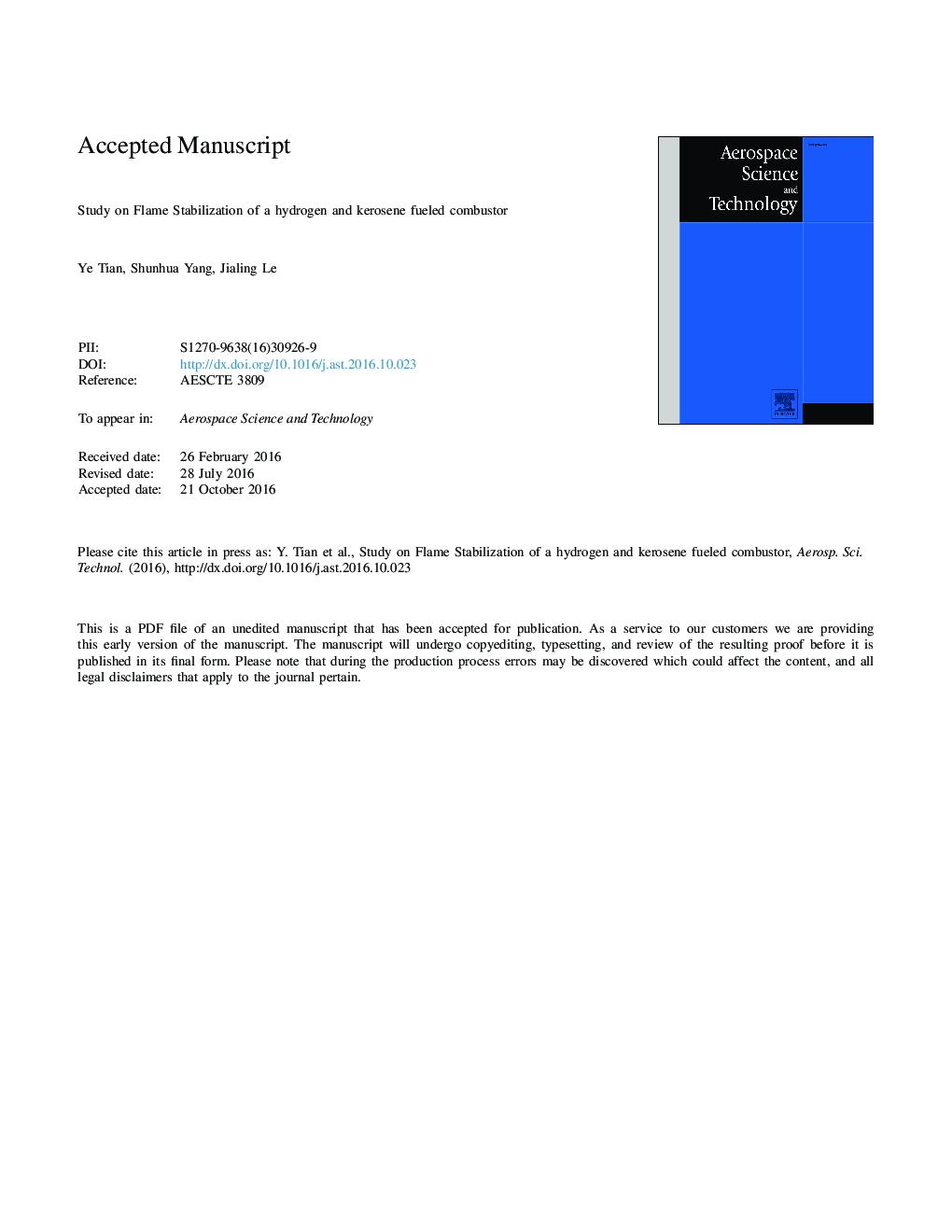| کد مقاله | کد نشریه | سال انتشار | مقاله انگلیسی | نسخه تمام متن |
|---|---|---|---|---|
| 5472964 | 1520075 | 2016 | 14 صفحه PDF | دانلود رایگان |
عنوان انگلیسی مقاله ISI
Study on flame stabilization of a hydrogen and kerosene fueled combustor
ترجمه فارسی عنوان
مطالعه در تثبیت شعله یک سوخت احتراق سوخت هیدروژن و نفت سفید
دانلود مقاله + سفارش ترجمه
دانلود مقاله ISI انگلیسی
رایگان برای ایرانیان
موضوعات مرتبط
مهندسی و علوم پایه
سایر رشته های مهندسی
مهندسی هوافضا
چکیده انگلیسی
Flame stabilization of a hydrogen and kerosene fueled combustor was experimentally and numerically studied in the present paper for a simulated flight Mach number 4.5. The results were obtained under the inflow conditions of Mach number of 2.0, static temperature of 656.5 K and static pressure of 0.125 MPa respectively. An air throttle was used as an independent backpressure source to generate a shock train which was used to achieve flame stabilization, and the location of air throttling was 575 mm downstream the combustor entrance. Our results indicated that the equivalence ratio (ER) of hydrogen and kerosene had a big effect on flame stabilization, when the ER of hydrogen was 0.11, the kerosene (ER: 0.16) could be ignited successfully by the hydrogen pilot flame without air throttling, but the flame of kerosene/air was unstable, and it would be blown off later. When the ER of hydrogen had been increased to 0.22, the flame of kerosene (ER: 0.16 and 0.25) and air mixture was stable without air throttling. But when the ER of kerosene was increased to 0.45, the kerosene/air could not be ignited at all and the pilot flame was blown off by the unheated kerosene also without air throttling. Shock waves generated due to the increased back pressure by the throttling air, which decelerated the high-speed main stream, and increased the temperature and pressure in the combustor. The cavity shear layer was lifted into the core flow, which would enhance the fuel/air mixing efficiency. Then the kerosene (ER: 0.45) could be ignited successfully by the hydrogen pilot flame (ER: 0.22), and the flame stabilization was also achieved by the throttling air.
ناشر
Database: Elsevier - ScienceDirect (ساینس دایرکت)
Journal: Aerospace Science and Technology - Volume 59, December 2016, Pages 183-188
Journal: Aerospace Science and Technology - Volume 59, December 2016, Pages 183-188
نویسندگان
Ye Tian, Shunhua Yang, Jialing Le,
